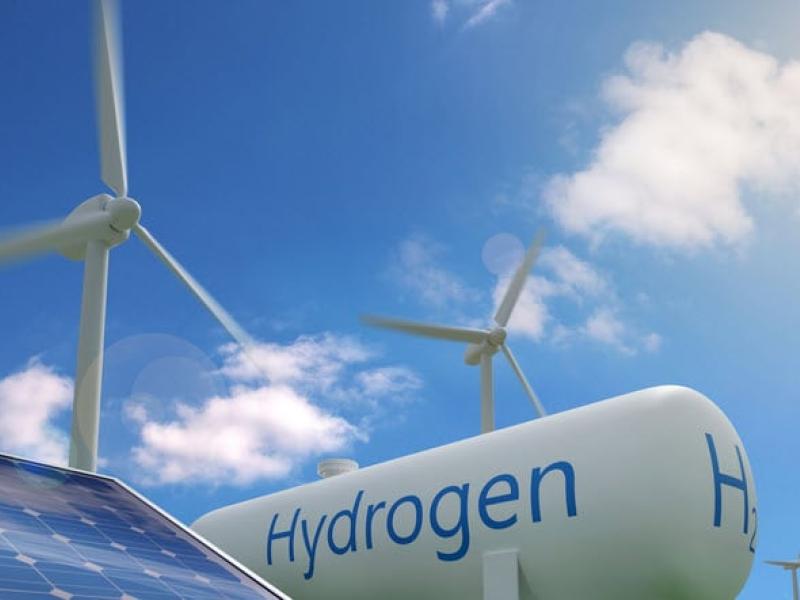Power-to-X for Applications - your P2X network
Green gas quota: paving the way for a functioning hydrogen market

The economic viability of green hydrogen must be improved and the existing sluggish market dynamics broken. While potential customers are currently still complaining about the lack of availability of green hydrogen at competitive prices, producers are simultaneously confronted with insufficient demand. The introduction of a (ramp-up) blending quota of climate-neutral gas (hydrogen, but also synthetic methane or biogas) to be defined as an obligation for gas network operators is intended to establish a functioning market.
The green gas quota should be seen as a transitional solution. As soon as the economic viability of green hydrogen is achieved through technological cost degression, the quota will no longer be necessary.
The managing directors of the trade associations involved commented on the paper on the introduction of the green gas quota as follows:
Dr. Dennis Rendschmidt, Managing Director VDMA Power Systems:
- "During the transformation, fossil products are often still cheaper than their green counterparts. We therefore need temporary instruments to reduce the costs of climate-neutral gas across the board in the initial phase."
- "A well-thought-out quota system represents a justifiable additional expense for the individual consumer; at the same time, however, it solves the chicken-and-egg problem when ramping up hydrogen from renewable sources."
Peter Müller-Baum, Managing Director of VDMA Power-to-X for Applications:
- "On the supply side, the quota creates a strong impetus for the demand of green gas production technologies, especially in the hydrogen value chain."
- "Due to the national obligations to implement the European Renewable Energy Directive (RED III) to use 42% of the hydrogen used in industry from renewable sources, the German government must initiate measures. A green gas quota can make an important contribution to this."
Picture: Shutterstock

The economic viability of green hydrogen must be improved and the existing sluggish market dynamics broken. While potential customers are currently still complaining about the lack of availability of green hydrogen at competitive prices, producers are simultaneously confronted with insufficient demand. The introduction of a (ramp-up) blending quota of climate-neutral gas (hydrogen, but also synthetic methane or biogas) to be defined as an obligation for gas network operators is intended to establish a functioning market.
The green gas quota should be seen as a transitional solution. As soon as the economic viability of green hydrogen is achieved through technological cost degression, the quota will no longer be necessary.
The managing directors of the trade associations involved commented on the paper on the introduction of the green gas quota as follows:
Dr. Dennis Rendschmidt, Managing Director VDMA Power Systems:
- "During the transformation, fossil products are often still cheaper than their green counterparts. We therefore need temporary instruments to reduce the costs of climate-neutral gas across the board in the initial phase."
- "A well-thought-out quota system represents a justifiable additional expense for the individual consumer; at the same time, however, it solves the chicken-and-egg problem when ramping up hydrogen from renewable sources."
Peter Müller-Baum, Managing Director of VDMA Power-to-X for Applications:
- "On the supply side, the quota creates a strong impetus for the demand of green gas production technologies, especially in the hydrogen value chain."
- "Due to the national obligations to implement the European Renewable Energy Directive (RED III) to use 42% of the hydrogen used in industry from renewable sources, the German government must initiate measures. A green gas quota can make an important contribution to this."
Picture: Shutterstock

